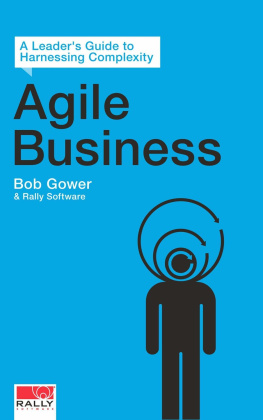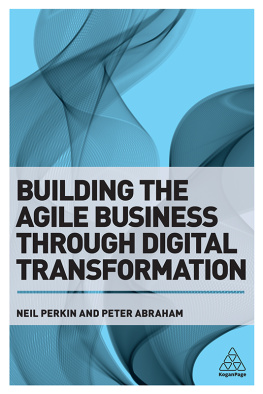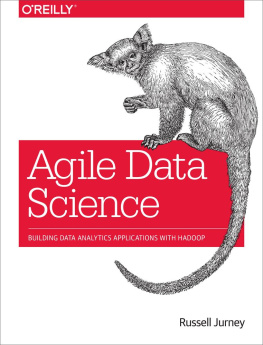James S. Russell The Agile City Building Well-being and Wealth in an Era of Climate Change 10.5822/978-1-61091-027-9_0 James S. Russell 2011
In a very short time the United States has realized that global warming poses real challenges to the nations future. The Agile City engages the fundamental question of what to do about it.
The big talk is of alternative energy: hydrogen-powered cars and biofuels; clean coal, reinvented nuclear, and elaborate, yet-to-be-perfected means to store huge amounts of carbon while we figure out what to do with it. Advocates hope to plug one or more of these clean technologies into the grid and declare the problem solved. Though appealing, these are speculative technologies that demand enormous investment and that can work only with very large subsidies. They have large environmental effects we ignore at our peril, and they may not even prove viable.
As Kroon Hall and Dockside Green show, we can achieve carbon neutrality today in buildings and communities with efficiency measures that are already proven and with a dollop of renewable energy. We can retrofit our communities to drastically reduce the amount of driving we need to do, and therefore reduce transportation carbon emissions, one of the two largest sources of greenhouse gases in our economy (the other is buildings). Rethinking construction and our communities has additional benefits. The word agile appears in this books title because we must adapt our lives to a world that climate change is altering before our eyes. Clean energy alone is not enough. We face disruptions of weather patterns and agriculture, acidifying seas, storms, floods, and droughts. Given the irreversible warming already set in motion, well have to keep changing. In other words, well need to develop an urban culture of agility.
Unlike high-tech alternative energy technologies, The Agile City focuses on reducing emissions and coping with climate-change effects.
In much of the global warming debate, energy efficiency is treated almost condescendingly, as something nice to do but of marginal usefulness. The Agile City shows that change undertaken at the building and community levels can reach carbon-reduction goals rapidly, perhaps much quicker and at lower cost than shoving the economy into carbon submission with a disruptive range of carbon taxes (then waiting for markets to sort out the problem) or praying that a big-technology silver bullet will save us and avoid our personal inconvenience.
It may be that we must ultimately resort to high-tech alternative energy, nuclear, biofuels, and every conservation measure, as many experts argue. Others say it hardly matters what Americans do if the big and growing emitters such as Chinadont take steps to drastically cut the carbon they pour into the atmosphere. But why shouldnt we exploit the rich potential of conservation as fast as possible? Why should other countries take action in the absence of a serious US commitment? At this writing, the United States is the world laggard, unable to move ahead on commonsense conservation strategies that dont cost much. Comparatively speaking, conservation and adaptation are the low-hanging fruit.
Adapting buildings and communities not only promises rapid progress in reducing Americas carbon footprint but also offers numerous other benefits that tax gimmicks and massive alternative-energy investments cant match.
Adapting to the future is as much about changing hidebound attitudes and examining underlying assumptions as it is about technology and policy. The Agile City helps the reader identify changes that make large impacts at low costs. Well be wise to think about habitual development patterns, brain-dead regulatory regimes, and obsolete incentives built in by tax policy. Fixing them can be frustrating: we have to fight political battles about them, steer rigid bureaucracies in new directions, collaborate with those who are used to guarding turf. But the real costs of these kinds of changes are actually smalland the benefits largenot just in terms of the environment but because well be tuning communities to realize broader aspirations: to build wealth more responsively and to make places that are pleasing to live in. Many strategies are low-tech and low cost (such as making bicycles a bigger part of our lives), and others offer handsome paybacks on investmentbut only if we confront ingrained habit about what we build and how we pay for it.
Why Buildings?
The structures that we live and work in generate almost 40 percent of greenhouse gas emissionsand buildings tend to use the dirtiest energy: electricity generated from coal.1 About 35 percent of the nations assets are invested in real estate and infrastructure, and were adding up to 2 percent a year to that base. Every square foot built by conventional means is already obsoleteand may have to be remodeled or abandoned in just a few years. Waiting to take action will prove costly.2 A wide variety of tested tactics exist today to dramatically reduce the impacts of buildings on the environment, from old-fashioned awnings to new ways to light buildings with the sun and ventilate them with breezes. Were just leaving them on the table.
Why Communities?
Rather than devote enormous amounts of time and treasure to build SUVs that get fifty miles per gallon on the way to the discount superstore thirty miles away, The Agile City argues that intelligently designing our towns could reduce that trip to a few miles or eliminate it entirely. Thats just one way that building (and upgrading) communities can dramatically reduce the land we plow under, the energy we consume, and the aggravation we endure in the course of daily tasks.
Why Buildings and Communities?
Environment-enhancing investments pay back more quickly when building strategies are coordinated with neighborhood layouts and urban networks. For example, a group of buildings can amortize the up-front costs of a shared geothermal well much more quickly than sinking wells for each structure. Thinking about the design of an entire city block at once, rather than one building at a time, means that every room in each building can be flooded with daylight so that few rooms need to rely on electric lights. Or, one structure can shade another from the heat of the afternoon sun. Cities can be remade to cope with the greater frequency of flooding, drought, forest fires, and wildfires, rather than await the enormous costs of catastrophe.
Coping with climate change cannot be compartmentalized when the urban places we share face so many other challenges. Good jobs have involved steadily longer and more congested commutes to affordable neighborhoods. Housing costs rise while communities decline and schools struggle. Fast-growing places deliver more traffic than opportunity. Broadly speaking, The Agile City shows how communities can develop the capacity to adapt to circumstancewhatever those circumstances may be. Real progress can be made only if tactics that engage global warming offer collateral benefits, as many do.
If we focus on arranging related urban functions close together, we multiply benefits. Think about locating a hospital not on just any old empty piece of land but close to doctors and labs and aligned to key transit routes. Then many staffers can get to work, patients can get care, and service businesses can access customers without driving. In this way, we reduce traffic, pollution, energy, time wasted, and the need for huge parking lots all at once.

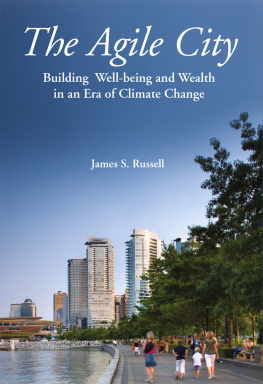


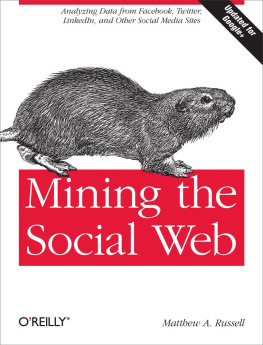


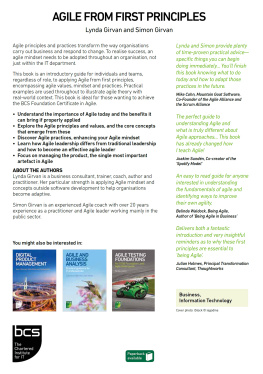

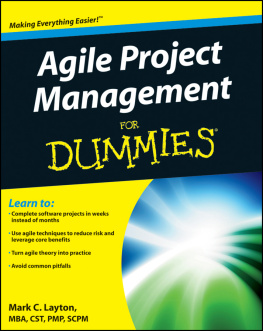

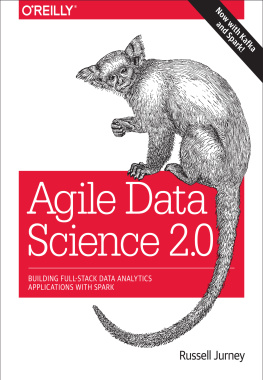
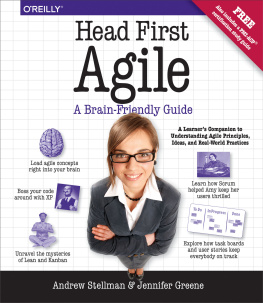
![Russell Jurney [Russell Jurney] - Agile Data Science 2.0](/uploads/posts/book/119628/thumbs/russell-jurney-russell-jurney-agile-data.jpg)
